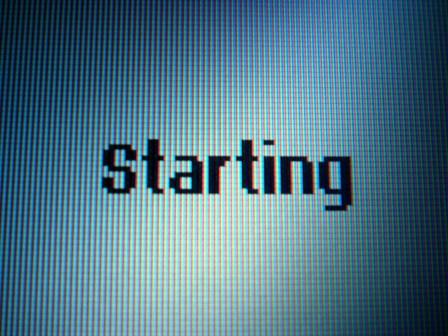Why is beginning something so hard?
How many of us have sat knowing we should make a start on that thing to write, but seem unable to do it. Something stops us, dead. We’re frozen by inertia, and can’t begin. However, there’s nothing like a drop-deadline to make it no-choice-time to glue those fingers to the keyboard.
This is universally true. Even for me. And once you’ve started, the hard work is almost done.
Stop questioning yourself and asking is your writing any good. Just start a draft. And no, drafting is not a waste of time. Just start typing.
All writing has a functional element to it – yes, it can also be entertaining and decorative. But it’s this functional aspect that you need to focus on to achieve your communication aims for the piece.
You need a systematic way of approaching and accomplishing that dreaded ‘I’ve got to write-something’ task that’s looming over you.
All writing needs a method.
A writing method is a way to work.
It helps to collect our thoughts, organises them in a direction, miraculously imparts a calming orderliness to the task ahead and provides a path to follow.
This ten step writing methodology can be copied, massaged, changed or replaced with whatever ultimately works for you. The important thing is to have a method to follow. It will become invaluable at those times when you need to pump something out fast.
- Define the job. Work out what job the piece needs to do (what you need to achieve). You should also know who you are speaking to, the key messages and what combination of facts and feelings will produce the results you’re looking for. Always keep the job clear in your head.
- Create a rough structure. Take a hard look at the job to do (Pt 1). Write a list of points that flow from it down the page (say 1-10) and bold them. These are your signposts, or map of where you are going. Later (when you’re editing) you may change the order, but don’t worry about that now. It doesn’t have to be perfect. Its job is to act as a guide.
- Get straight into it. Don’t worry about writing the perfect introduction. Or even one at all at this point. Yes I said no intro. Just get straight into it. Start with a benefit, an attention-getter or the key piece of news to be communicated. Work your way through the structure/list you made. The job here is to tell the story in full. Get it out of your head and on paper.
- Write a lead and let it flow. After you’ve done your story in full (Pt 3), go back and write your lead or introduction. Here, above all you are trying to lead the reader to keep reading. However, to be safe you must put the key points upfront, so that if they don’t read on, they at least have the lead information. The job of the lead is to spell out the reader benefit, or ‘what’s’ in it for me’, thus enticing them to read on
- Twenty word sentences. If you are aiming for clear, concise, comprehensible writing (and reading), consistently apply the twenty word rule. Its job is to make for better reading, and greater comprehension.
- Don’t worry about style. Your tone tells more. Just think about the reader. And again. And some more. Check that you’re sticking to the job. When you focus too much on your style it becomes self-conscious and its then about you the writer, and not the reader.The tone – or ‘voice’ – should be of more importance than style. Importantly, the context determines the tone of the piece. The right tone should support or assert your right to tell the story in the manner you are using – impartiality, personal, sales-driven, opinionated, authoritative etc.
- What’s in it for them? This question is paramount in all business and commercial writing. When you’re writing sales or marketing communications, you really can’t afford to take your eyes off that question for the whole time you’re writing, and they’re reading. Never forget it.
- Let it run its course, or out. Unless it’s a thriller story, you don’t need a climax. In all honesty, the majority of readers won’t get to it. Focus on the opening paragraphs.
- Close, or not. Do you need one, really? It depends on the piece, but if you need a conclusion, write a summary instead. Or just stop. Sometimes that works even better, especially if what’s come before has done its job.
- Edits. The true readability of any work is in the editing you do on your work before finishing. This is where the hard work is done.There is no such thing as writing, just re-writing.
A paradoxical closing thought for you…
“Beginning is easy – continuing hard”
–Japanese Proverb
Photo via stock.xchng userbooleanuni

